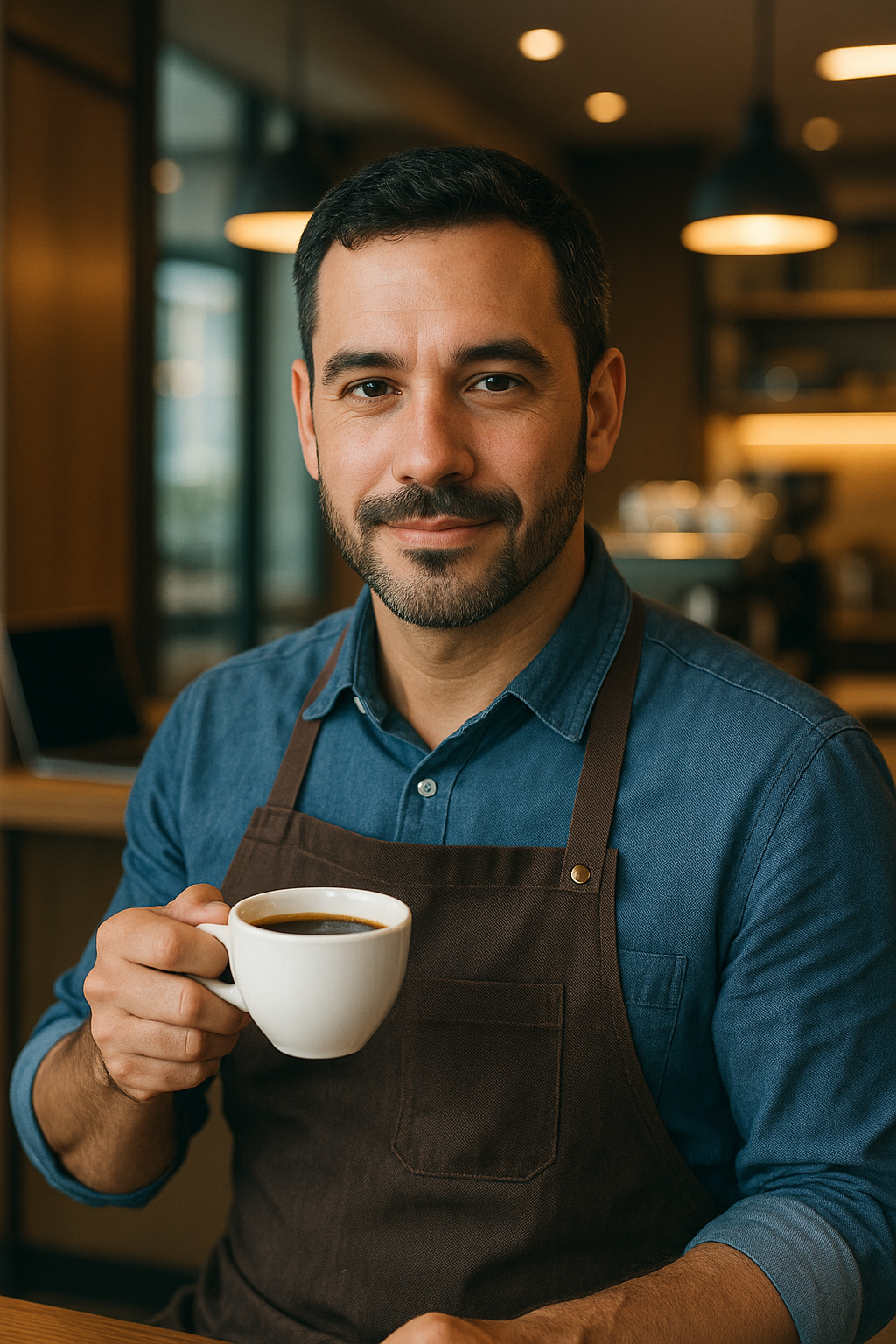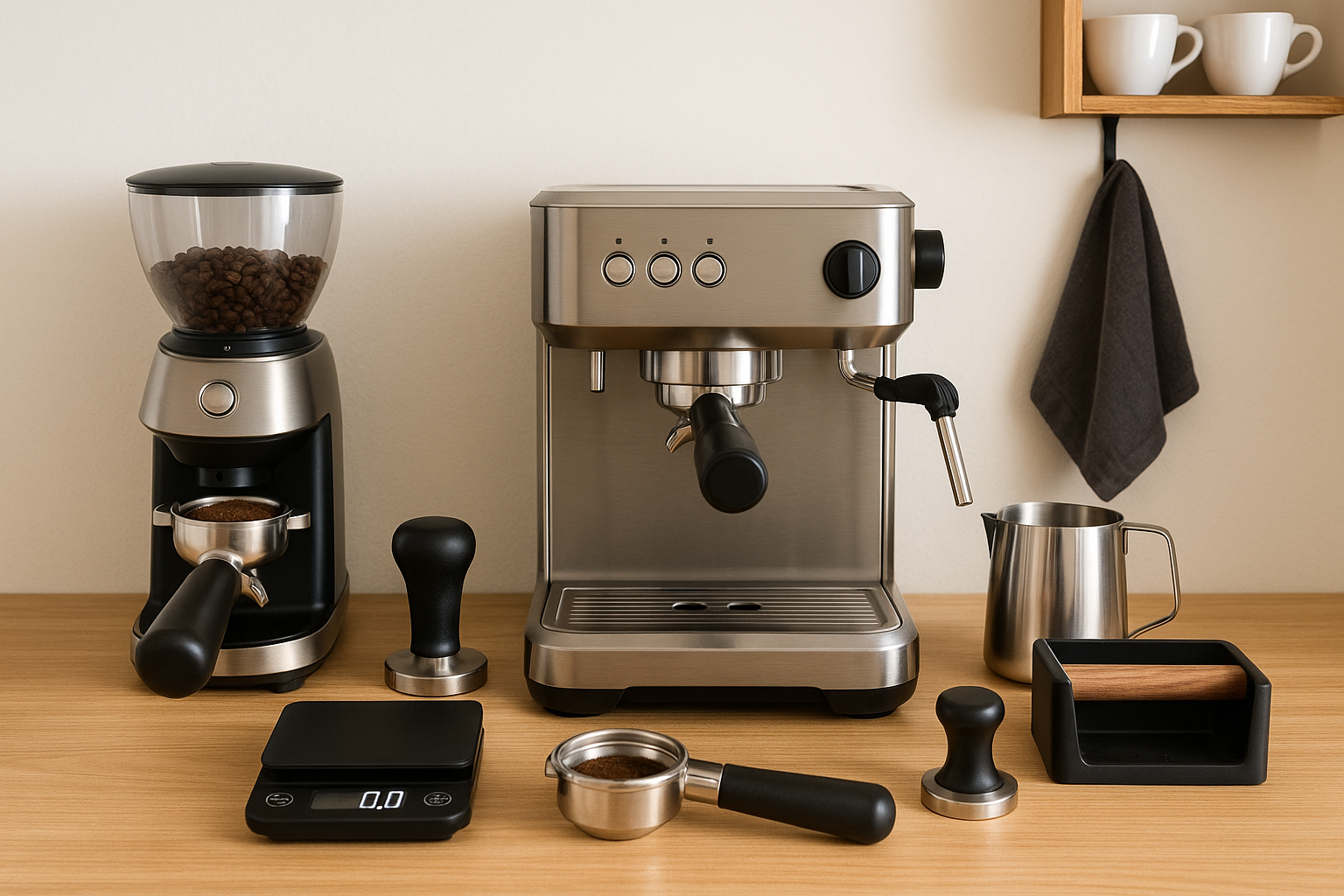If you’re a coffee enthusiast who dreams of skipping the café lines and crafting espresso at home, building your own home espresso station is the ultimate step forward.
Not only does it give you full control over your shots and milk texture, but it transforms your daily coffee ritual into a hands-on craft—and eventually, an art form.
This guide will walk you through every step of building a functional, efficient, and enjoyable espresso setup at home—from choosing equipment and accessories to organizing your space and perfecting your workflow.
Why Build a Home Espresso Station?
Investing in a home espresso station offers more than convenience:
- Saves money long term (your daily $5 latte adds up fast)
- Personalized drinks to your exact taste
- Barista experience from your own kitchen
- A creative, meditative morning ritual
- Better quality than many chain cafés, once dialed in
Whether you’re aiming for third-wave espresso or just a solid cortado every morning, a well-designed station will improve the experience—and results.
Essential Equipment for Your Espresso Station
1. Espresso Machine
The centerpiece of your station. Machines vary widely in price, control, and performance.
Types:
| Machine Type | Best For | Price Range |
|---|---|---|
| Single Boiler | Beginners, budget setups | $300–$700 |
| Heat Exchange (HX) | Intermediate users, milk drinks | $700–$1,500 |
| Dual Boiler | Enthusiasts, temperature control | $1,200–$3,000+ |
| Manual Lever | Purists, hands-on experience | $600–$3,000+ |
Top Machines to Consider:
- Breville Barista Express (all-in-one)
- Gaggia Classic Pro (budget, upgradeable)
- Rancilio Silvia (durable single boiler)
- Lelit Bianca (premium dual boiler with pressure profiling)
- Profitec Pro 300 (compact dual boiler)
2. Espresso Grinder
Arguably more important than your espresso machine. For proper extraction, you need a grinder that can produce fine, uniform grinds and allow for micro-adjustments.
Best Espresso Grinders:
- Baratza Sette 270 (fast and precise)
- Eureka Mignon Specialita (quiet and compact)
- Niche Zero (single-dosing, low retention)
- DF64 Gen 2 (popular for single-dose workflow)
Avoid blade grinders—espresso requires precision only burr grinders can deliver.
Recommended Accessories for Workflow and Quality
Once you have your core equipment, these accessories will take your espresso game to the next level:
1. Tamper
A flat, solid tamper ensures even pressure when compressing coffee in the portafilter. Choose one that matches your basket size (typically 58mm).
2. Distributor/Leveler
Distributes grounds evenly before tamping to reduce channeling.
3. WDT Tool (Weiss Distribution Technique)
Uses thin needles to break up clumps in the puck—improves consistency and extraction.
4. Scale with Timer
Helps you monitor input/output ratios and timing—essential for dialing in.
5. Knock Box
A container for used pucks. Saves time and keeps things clean.
6. Milk Pitcher
For steaming milk. Get at least a 12oz stainless steel pitcher with a narrow spout for latte art.
7. Puck Screen (optional)
Sits on top of the puck to improve water dispersion and reduce channeling.
Dialing In: Understanding Espresso Variables
Once you’ve built your station, the next step is dialing in—the process of adjusting your recipe for balance, body, and flavor.
Key Variables to Track:
- Dose (In): 18–20g of ground coffee in the portafilter
- Yield (Out): 36–42g of espresso in the cup (for a 1:2 ratio)
- Time: 25–30 seconds total shot time
- Temperature: 195°F–205°F depending on roast
- Pressure: Typically 9 bars (machines with PID allow customization)
Small changes in grind size, dose, and pressure can drastically alter the flavor. Keep notes to track what works best for different beans.
Organizing Your Espresso Station
Creating a dedicated space for your espresso gear not only improves aesthetics but also makes daily brewing more efficient.
Layout Tips:
- Place grinder to the side of your machine for workflow
- Store accessories like tamper and scale in a drawer or on a rack
- Use a mat or tray to define the station and catch spills
- Add wall-mounted shelves or magnetic strips for cups and tools
- Include a towel hook or cloth for quick cleanup
Ergonomics Matter:
- Ensure your tamping area is at a comfortable height
- Leave space for cleaning and cup placement
- Choose compact or modular furniture if space is limited (e.g., a rolling cart)
Cleaning and Maintenance
A clean espresso station ensures better-tasting coffee and longer equipment life.
Daily Tasks:
- Rinse portafilter and baskets after every shot
- Wipe steam wand and purge after each use
- Brush or blow out grinder chute
Weekly:
- Backflush espresso machine with water or detergent
- Clean shower screen and group head
Monthly:
- Use grinder cleaning pellets
- Deep clean steam wand tip
- Descale boiler (if needed, depending on water hardness)
Use filtered water to reduce scale buildup and improve flavor.
Budgeting: How Much Does a Home Espresso Setup Cost?
| Level | Total Cost Estimate | Components |
|---|---|---|
| Entry-Level | $400–$700 | All-in-one machine (e.g., Breville), tamper, milk jug |
| Intermediate | $800–$1,500 | Machine + separate grinder, accessories |
| Enthusiast | $2,000–$4,000+ | Dual boiler, premium grinder, full workflow |
Start with what fits your budget—then upgrade gradually. Even a simple setup can produce amazing results with practice and attention.
Final Thoughts: Your Café, Your Way
Creating your own home espresso station is more than just a gear setup—it’s about embracing a deeper relationship with coffee. From adjusting your grind to steaming milk just right, you’ll develop skills that connect you to the craft of espresso and the subtle nuances of every bean.
With the right tools, a bit of practice, and some curiosity, your kitchen can rival your favorite coffee shop. And once you pull that first perfect shot—it’s hard to go back.

Marcelo Oliveira is a coffee enthusiast and content creator specializing in barista skills, brewing methods, equipment reviews, coffee-related health insights, and fascinating curiosities from the coffee world. With a deep passion for every step of the brewing process, he turns technical knowledge into accessible and engaging content for both beginners and seasoned coffee lovers. Marcelo’s goal is to help readers appreciate the full experience of coffee—from bean to cup.
